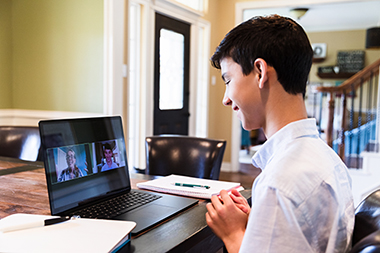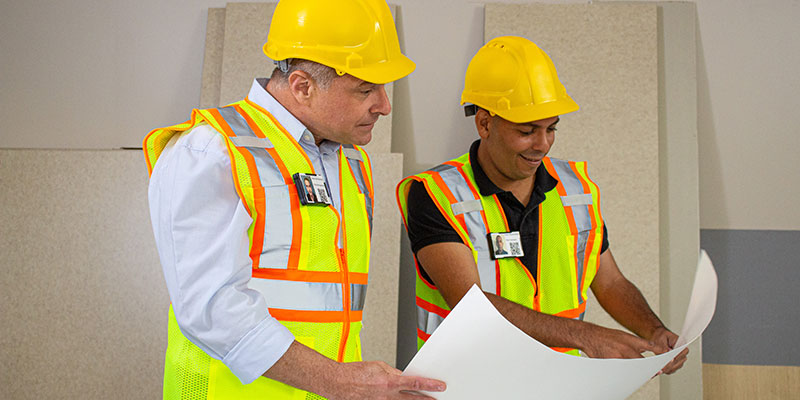Navigating Educational Funding and the Expanded E-Rate Program

For more than 25 years, educators have relied on the E-Rate program to help them fund internet access and internal connections. With the established E-Rate program1, schools have been eligible for discounts ranging from 20% to 90% of the costs of eligible services, depending on the level of poverty and the urban / rural status at the school district level.
Specifically, the standard E-Rate program covers on-site:
- Data Transmission Services and/or Internet Access
- Internal Connections
- Managed Internal Broadband Services
- Basic Maintenance of Internal Connections
And Mobile Extensions of Libraries and Schools:
- Bookmobile Equipment and Internet Access
- Bus Wi-Fi Equipment and Internet Access
But two years after education switching back from online or hybrid learning back to classrooms, many school administrators are asking:
- How will I continue to provide learning with pandemic-depleted funds?
- Will I need to offer online or hybrid learning in the future?
- What should I do to prepare for it?
Will E-Rate Funding Keep Up?
“Outside the school buildings — that’s the E-Rate frontier that needs to be broken through,” said David Jacobson, chief technology information officer of the Lamar Consolidated Independent School District in Texas. “We need creative ways to get internet access to students where traditional ways have not been effective, and we need those connections to be eligible for E-Rate funding.”
In response to educators, on July 18, 2024, the FCC adopted a report and order (FCC 24-76) that makes E-Rate support available for eligible schools and libraries for Wi-Fi hotspots and wireless Internet services that can be used off-premises by students, school staff and library patrons.2 In addition, the FCC in 2023 directed its Wireline Competition Bureau to include funding for Wi-Fi on buses,3 which had long been sought after to mirror school and bookmobile (for libraries) environments.
Adoption of both report and orders required USAC to update the FY2025 FCC Form 470, effective September 19, 2024.

Learn about funding for 2025, what’s new, what’s eligible and how to apply with this handy guide.
Where Does the Future Lie?
Technology and connectivity for education and remote learning is more important than ever to mitigate the learning loss and enable new learning opportunities where connectivity is lacking.

Many educators believe remote learning will remain a vital resource for students to catch up during supplementary hours, vacation time and the summer — and will become a permanent ubiquitous educational tool.
“Education needed a change, and the pandemic forced that change to a blended learning style. Kids should be in classrooms,” Jacobson said. “But there’s an awful lot they can do and learn outside the classroom through virtual learning that will help maximize time in the classroom with teachers and also allow them to do all sorts of virtual learning activities that aren’t necessarily possible in the classroom.”
School Connection No Matter Where
To improve connectivity and security, some school districts are considering collaborating with a cellular company to build a private LTE network. This would include building cell towers on district land where providers would not otherwise construct because of low population in the area. E-Rate program funds may assist in this construction. The FCC has sought comments on whether funds should support fixed or mobile wireless towers.4
“We’ve considered that. Everyone would go through our LTE network, so it’s our program, our management, our content filters. Telecommunications providers would help outlying communities connect to our district’s network,” Jacobson said. “The key is making that ‘e-ratable’ because now we’re providing internet access outside our campuses, schools and district buildings. That’s the big next step the FCC needs to take with E-Rate to make that possible.”
FCC Chairwoman Jessica Rosenworcel has long supported finding ways to provide internet access to students outside of the school building. “We need to get to work to update E-Rate funding so all our students can be connected to virtual classrooms, no matter who they are or where they live,” said Rosenworcel.5
Delivering Advanced Solutions Built for Education
A cellular partner with experience assisting school districts can serve as the enablement arm to help guide you through the often-complicated E-Rate acquisition process.
Look for a partner that provides:
- An in-house E-Rate and Educational Funding Specialist who has a strong track record of helping schools navigate a new, virtual learning world and the E-Rate process, and provide consultative reviews to help you achieve long-term goals
- A Local Expert committed to support in your urban or rural community
- Secure Networks to protect your students and connected assets, with Children’s Internet Protection Act (CIPA) content filtering, mobile device management and a private network
- Stable Connections to continue educating despite the unexpected, including automatic internet backup
- Connected Devices such as hotspots, laptops and tablets
- Seamless Collaboration to connect and work in and out of the classroom with cloud-based communications, enterprise messaging and video conferencing
UScellular® collaborates with school districts in both urban and rural settings to connect students to the Internet, through secure private networks, mobile hotspots, connected devices, cloud-based communications and local expert guidance. We also provide an E-Rate specialist on hand to answer your questions and guide you through the arduous application process.
Are you ready to see if you are taking advantage of all the E-Rate offerings? Set up a no-commitment consultation with our Education Funding and E-Rate Team to uncover potential gaps in your application process. Let's connect.
References
- Universal Service Administrative Co (USAC) 170012-SL-ApplicationProcess_Flowchart-2018 (usac.org)
- FCC.org Report and Order WC Docket No 21-31 Released: July 29, 2024
- FCC.org Public Notice WC Docket No 13-184 Released: October 25, 2023
- FCC News DOC-369632A1.pdf (fcc.gov) February 1, 2021
- The Hill Clyburn, Klobuchar push $94 billion fix to digital divide March 11, 2021




